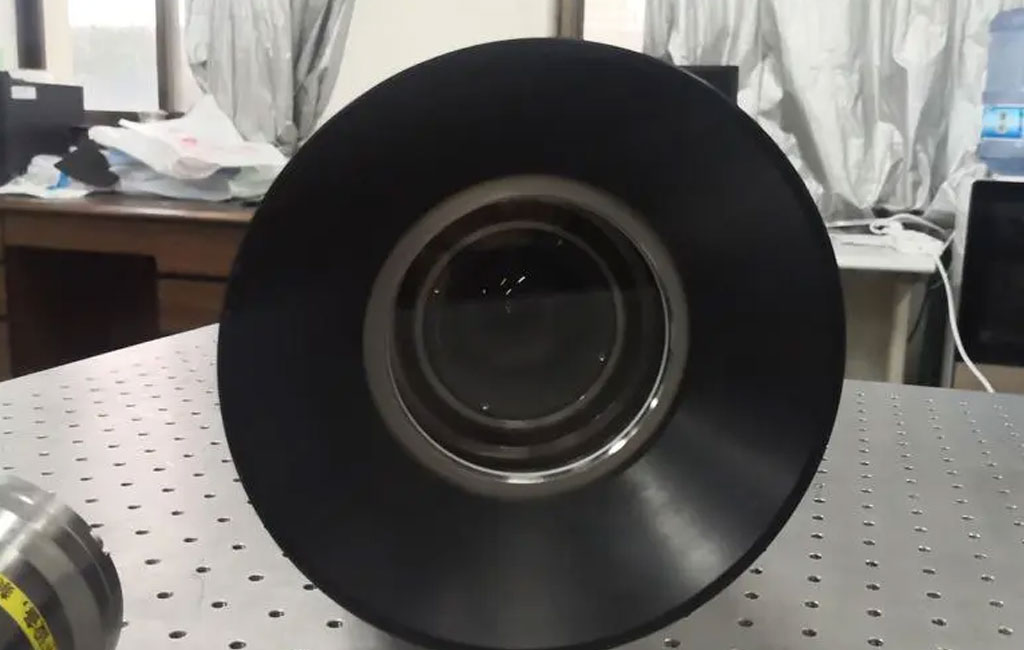
Titanium Spinning
Titanium spinning is a metal-forming process that involves shaping titanium alloys into various cylindrical or conical parts using rotational forces. This technique, also known as metal spinning or spin forming, is commonly used in aerospace, medical, and industrial applications due to the unique properties of titanium, such as high strength, low density, and excellent corrosion resistance. The process allows for the production of complex geometries with minimal material waste, making it an efficient and cost-effective manufacturing method for titanium components.
The use of spin forming technology to manufacture thin-walled rotational shell components addresses technical challenges such as low stiffness, significant vibration, and low machining accuracy, or situations where machining is not feasible at all during turning processes. This technology offers several advantages when applied in the aerospace sector.
For example, the U.S. has successfully produced large missile shells with a diameter of 3900 mm using power spinning technology, achieving a radial dimensional accuracy of 0.05 mm, a surface roughness of Ra 1.6-3.2 μm, and a wall thickness variation of ≤0.03 mm.
Titanium Manufacturing Company in the U.S. uses a 1.5 m vertical spinning machine to spin form a Ti-6Al-4V titanium alloy missile pressure vessel head with a diameter of 1524 mm, taking only 5 minutes per head.
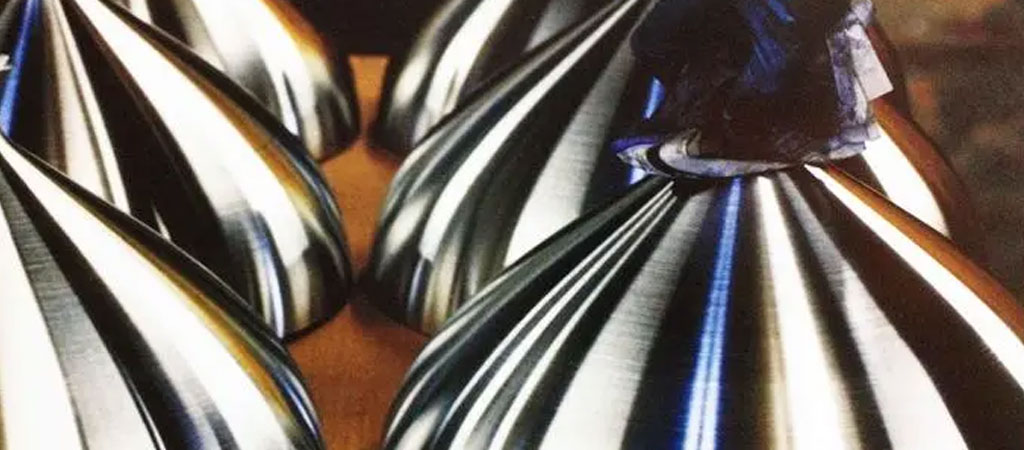
The second-stage solid rocket motor casing of the Minuteman intercontinental ballistic missile (ICBM) uses Ti-6Al-4V titanium alloy, formed through power spinning, resulting in a 30% reduction in the weight of the titanium alloy shell. In response to aerospace demands for lightweight, high-strength, and large-scale components, Germany’s MT Aerospace has used spinning technology to produce a 1905 mm high-strength Ti-15V-3Cr alloy propellant tank, which has been applied to the European Alpha Communication Satellite’s large platform. This has led to significant weight reduction of the satellite platform, thereby increasing its payload capacity.
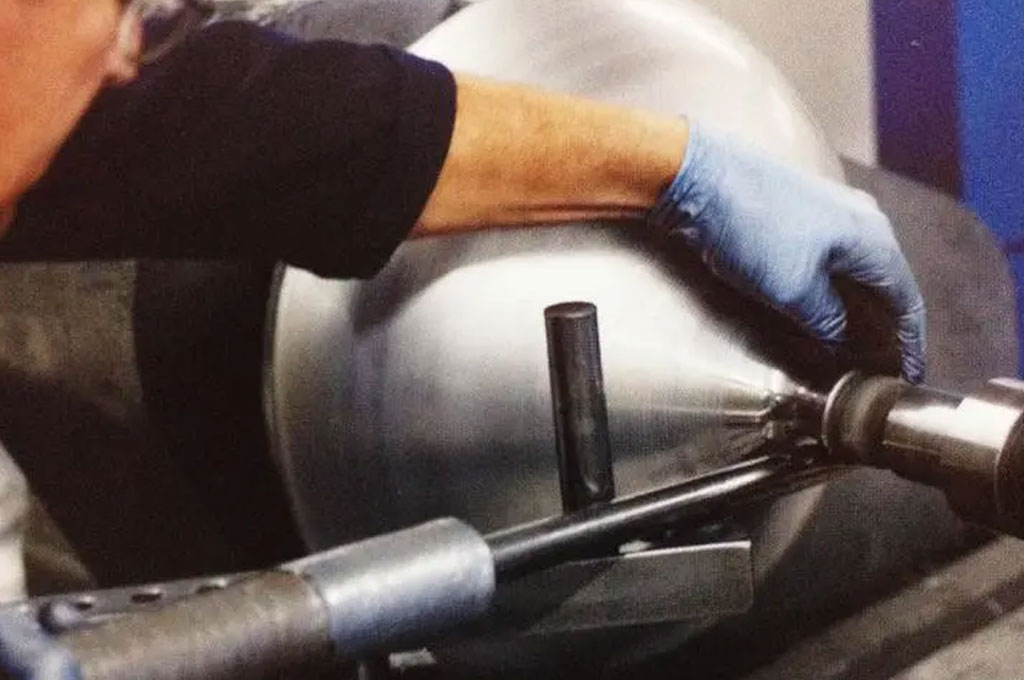
Titanium Spinning In China
China’s research on spinning technology and equipment began in the early 1960s, while research on titanium alloy spinning started in the 1970s. Over the past 40 years, a mature system has been established, covering the development of equipment to process design. Titanium alloys and spun products used in the aerospace sector in China include rocket engine casings, blade covers, gyroscope guidance covers, and inner skins. Ti8Al1Mo1V high titanium alloy is used for engine blades, heat-treated and strengthened for titanium alloy spin forming; TB2 titanium alloy is used for spinning small nozzles, among other applications.
The Xi’an Aerospace Propulsion Machinery Factory developed the china’s largest diameter titanium alloy cylindrical components. They successfully spun a thin-walled semi-circular titanium ring with a diameter of 500 mm through two-pass conventional spinning for spacecraft micro-thrust attitude adjustment.
The 703 Research Institute of the China Aerospace Science and Technology Corporation (CASC) combined conventional and power spinning technologies using TC3 and TC42 titanium alloy sheets as blanks. They produced two types of titanium alloy hemispherical (inner diameter 522 mm × 2.0 mm) and cylindrical storage tank shells (φ163 mm × 2.0 mm × 200 mm cup-shaped part, φ163 mm × 2.0 mm × 360 mm, and φ112 mm × 6.0 mm × 1000 mm cylindrical part) through hot spinning.
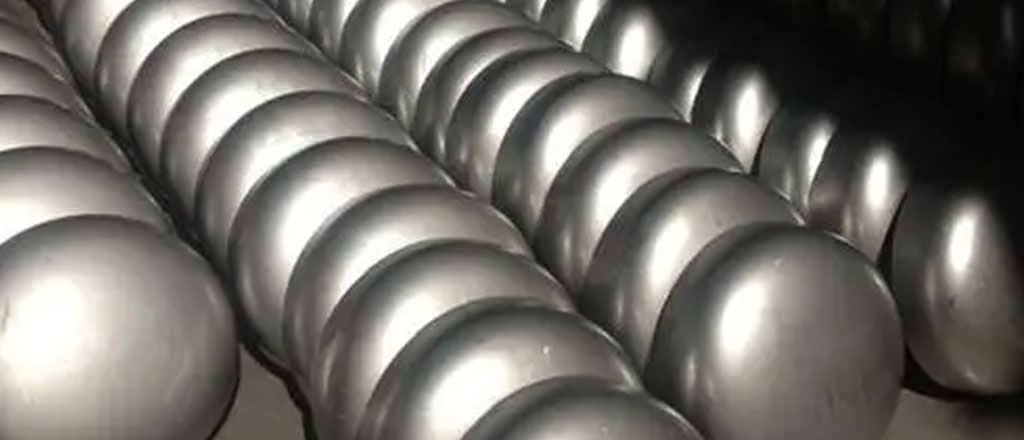
In recent years, with the advancement of computer simulation technology, numerical simulation has been widely used in the analysis of the metal spinning process. The Aerospace Materials and Technology Research Institute conducted computer simulations on TC4 cylindrical components, analyzing the effects of process parameters such as spinning wheel attack angle, spinning wheel motion trajectory, and conventional spinning passes on the spinning process. They successfully spun high aspect ratio TC4 titanium alloy cylindrical components. Although titanium alloy precision spinning technology provides various high aspect ratio spinning components for the aerospace field, further enhancement is required for the engineering application of parts and the complexity of the spinning process. Overall, spinning technology has been widely applied in China’s aerospace industry. However, there are no application examples of large-diameter, thin-walled integral titanium alloy hot spinning forming processes. Technologies such as integral spinning of 2.25 m diameter tank bottoms, petal forming of 5 m diameter cryogenic tank bottoms, and forming of complex titanium alloy and high-temperature alloy structural parts are still in the exploratory stage.
Titanium Spinning Service – Spun Titanium Suppliers & Company
Spin forming technology combines the advantages of forging, extrusion, stretching, bending, and ring rolling processes, enabling minimal to no cutting during production. It meets the requirements for producing a wide variety of small-batch, lightweight, precision, and highly reliable hollow titanium alloy rotational components used in spacecraft. This technology is particularly suited for the development of products such as shells, pressure vessels, heads, and nozzle extensions in the aerospace field, making it the preferred process for manufacturing thin-walled rotational titanium alloy components.
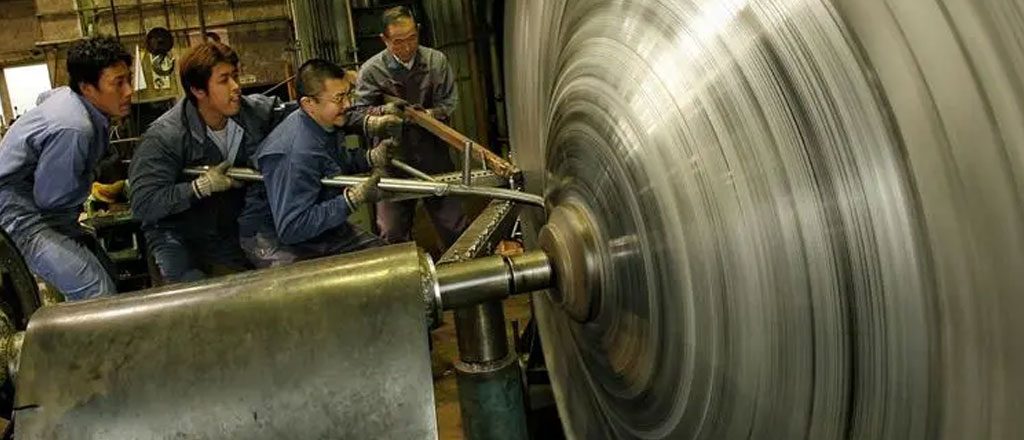
Currently, foreign titanium alloy spinning technology has advanced to achieve precision in large thin-walled components, rapid cost-effective spin forming without molds, and continuous composite forming techniques such as rolling-spinning, extrusion-spinning, and forging-spinning.
These advancements have led to the widespread application of titanium alloy precision spinning technology in the aerospace sector.
For example, Germany’s MT Aerospace used power spinning technology to produce a 1.905-meter high-strength Ti-15V-3Cr titanium alloy propellant tank, which was applied to the “Alpha” communication satellite. In the United States, moldless spinning technology was successfully used to develop a 1.2-meter diameter Ti-6Al-4V titanium alloy head, achieving a 90% deformation in a single pass of cold spinning, which was successfully applied to the service module tank head of the Apollo spacecraft.
In China, the titanium alloys involved in spinning technology include TA1, TA2, TA15, TC3, TC4, TB2, etc. Typical aerospace components include bellows, gas cylinders, rocket engine casings, nozzles, skins, and cylindrical parts.
BE-CU Spun Company utilized finite element simulation technology combined with conventional spinning to successfully develop an 0.8 mm wall thickness TC4 titanium alloy lunar rover wheel rim. The Aerospace Materials and Technology Research Institute successfully developed a 670 mm TC4 satellite tank segment by studying the defect formation mechanism in large spinning thin-walled TC4 titanium alloy cylindrical components during power spinning and using finite element numerical simulation technology.
The wall thickness precision of this segment was 0-0.2 mm, and the contour dimension precision was 0-0.5 mm. BE-CU also successfully developed a 500 mm diameter TC4 titanium alloy thin-walled ring-shaped inner liner using a combined forward-reverse spinning process.
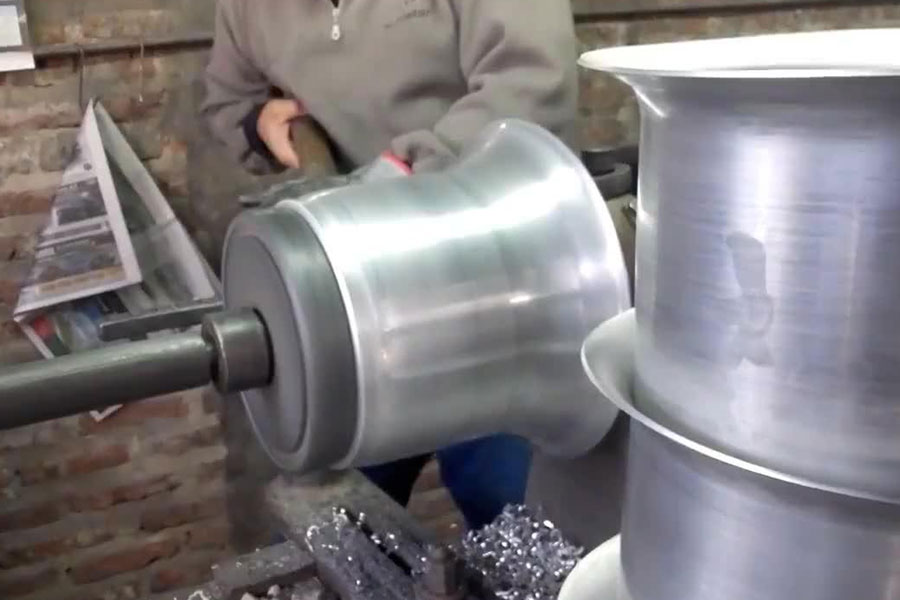
Although titanium alloy precision lathe spinning technology has been relatively widely applied in China’s aerospace field, it is still limited by key technical challenges such as temperature field uniformity, springback effect, diffusion effect, and material-die size matching. Currently, China’s aerospace titanium alloy spun products mainly use high-temperature mold forming processes, with rapid precision spinning technology still in its infancy. Continuous composite forming technology remains in the engineering testing phase, and large-diameter, thin-walled integral titanium alloy spun components have yet to achieve mass production. There is a need to focus on research in areas such as titanium alloy formability, spinning dimensional precision control, shape/property control, heat treatment, and spinning simulation.
The Advantage Of Titanium Spinning
Metal spinning offers a range of advantages to those looking for a very versatile, streamlined process, including:
- Lower Costs – Compared to the tools employed in alternative forming methods, titanium spinning tools are typically 10% of the cost.
- Shorter Lead Times – The titanium spinning process amounts to significantly shorter turnaround times – tools and spun components can be available within weeks rather than months.
- Maximum Design Flexibility – titanium spinning tools can be quickly and easily changed to accommodate evolving product designs, enabling flexibility when it’s needed most.
- Seamless, High-Quality Construction – titanium spinning produces smooth, durable objects without seams or welds, for parts require feature superior strength and great aesthetics.
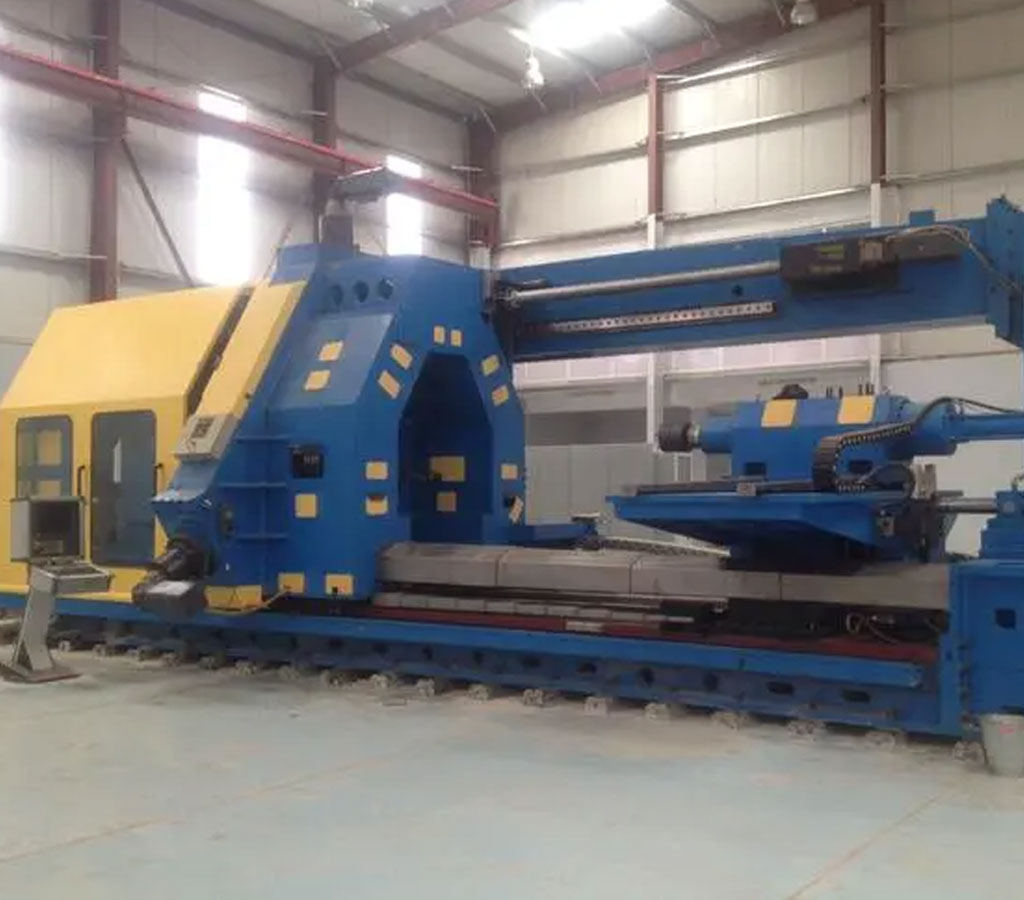
Our Case Studies Gallery Of Spun Titanium CNC Spinning
Put Be-cu.com’ experience to work for all of your titanium spinning and spin forming needs—from traditional manual titanium spinning to cutting edge CNC titanium spinning. The spun titanium spinning process is perfect for a wide variety of industries that require consistent tolerances, fast turn-around, and uncompromising quality.


